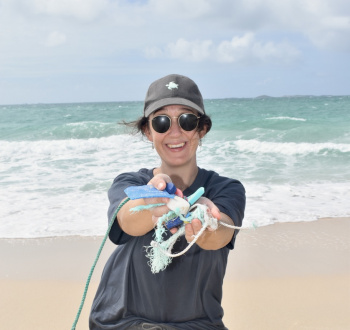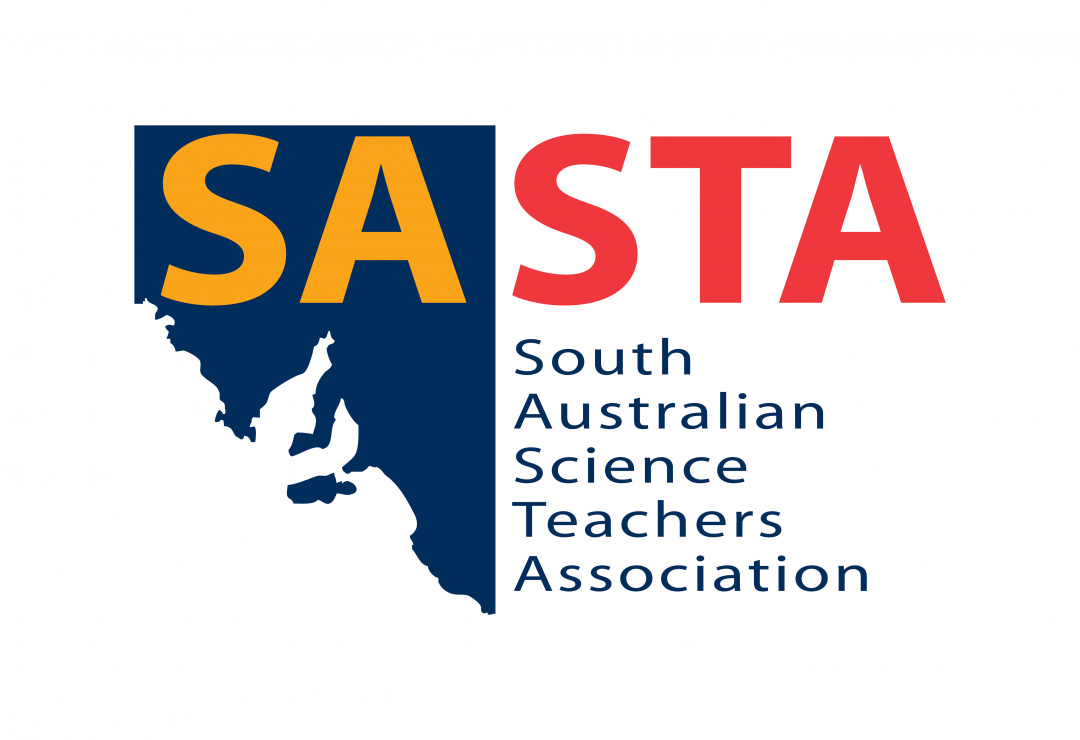Posted by SASTA
on 07/04/2025

Written by Dr Nina Wootton from the School of Biological Sciences at the University of Adelaide
The problem with plastic
Plastic is everywhere. It’s in our homes, our workplaces, our oceans, and even in the food we eat. Once considered a groundbreaking material for its durability and versatility, plastic has become one of the most pressing environmental issues of our time. Every year, we produce around 380 million metric tonnes of plastic, and a staggering amount of it ends up in the environment. Scientists estimate that 170 trillion plastic particles are floating on the ocean’s surface, while millions of tonnes sink to the seafloor. This pollution affects marine life at every level, from tiny plankton to whales and turtles.
What are microplastics?
Microplastics are tiny plastic particles, typically smaller than 5mm, that come from larger plastic debris breaking down or are intentionally manufactured for use in products like cosmetics, industrial abrasives, and synthetic fabrics. These particles are now found in every environment on earth, from deep-sea trenches to ice in Antarctica. Because of their small size, microplastics can be ingested by marine life, working their way up the food chain and potentially impacting human health.
My research on microplastics
 As a marine scientist, I have spent years investigating how plastics enter the environment and how they impact marine ecosystems. My research focuses on understanding where microplastics accumulate, how they move through food chains, and their potential effects on marine life and human health.
As a marine scientist, I have spent years investigating how plastics enter the environment and how they impact marine ecosystems. My research focuses on understanding where microplastics accumulate, how they move through food chains, and their potential effects on marine life and human health.
In our research group in the School of Biological Sciences at the University of Adelaide we answer many questions about marine and coastal plastic and microplastics. From assessing plastics in the environment and seafood or investigating the chemicals that attach themselves to plastics in the water column to broad scale educational initiatives, and all things in-between.
We now know how much microplastic Australian seafood species are ingesting (don’t worry it is very low, particularly compared to global studies – if you want to see more you can read here and here), what community of organisms are living on microplastics in Australian waters (read more here), and how different chemicals are attaching to microplastics and potentially contaminating the edible components of seafood. We are learning more about where microplastics accumulate in mangroves and seagrass, how they enter the marine systems through outfalls, rivers and stormwater and where in the seafood supply chain they might be contaminating products that end up on your plate. We are even collaborating with a group of microplastic scientists to create a guide on how to sample microplastics in water, sediment, biota and air – so that future research on microplastic contamination is standardised.
Empowering educators
 Understanding plastic pollution is essential for the next generation, and teachers play a crucial role in helping students grasp the scale of the issue and potential solutions. That’s why I am involved in projects that bring plastic research into classrooms. One initiative, Toys for Turtles, is a community-driven program in north-east Arnhem Land that works with Indigenous rangers, schools, and local communities to tackle marine debris. It focuses on recycling plastic waste into useful products while also teaching students about the cultural significance of sea turtles.
Understanding plastic pollution is essential for the next generation, and teachers play a crucial role in helping students grasp the scale of the issue and potential solutions. That’s why I am involved in projects that bring plastic research into classrooms. One initiative, Toys for Turtles, is a community-driven program in north-east Arnhem Land that works with Indigenous rangers, schools, and local communities to tackle marine debris. It focuses on recycling plastic waste into useful products while also teaching students about the cultural significance of sea turtles.
Educators from all over Australia can access free teaching resources from Toys for Turtles, which include lesson plans, hands-on activities, and information on marine plastic pollution. These resources help students understand where plastics come from, how they impact ecosystems, and what we can do to reduce waste. You can find these materials at https://www.toysforturtles.com/education-resources.
Moving towards solutions
The fight against plastic pollution isn’t just about research—it’s about action. By educating students, engaging communities, and working on real-world solutions, we can create lasting change.
Plastics are a great gateway into sustainability education because they are a visible and tangible issue that students can relate to. Unlike some environmental problems that feel overwhelming, plastic pollution is something students can actively tackle through simple changes like reducing single-use plastics, participating in clean-ups, or exploring recycling innovations. Once students start engaging with plastic solutions, they often become inspired to explore other areas of sustainability, from renewable energy to biodiversity conservation.
Teachers, students, and scientists all have a role to play in tackling this challenge. I encourage educators to explore these resources and bring the conversation into their classrooms. Together, we can move towards a future with less plastic and healthier oceans.
Nina will also be presenting a Cutting Edge Session at the 2025 SASTA Annual Conference on Tuesday 15 April. Click here to find out more.
In this Section
Archive
- December 2025
- November 2025
- October 2025
- September 2025
- August 2025
- July 2025
- June 2025
- May 2025
- April 2025
- March 2025
- February 2025
- January 2025
- December 2024
- November 2024
- October 2024
- September 2024
- August 2024
- July 2024
- June 2024
- May 2024
- April 2024
- March 2024
- February 2024
- December 2023
- November 2023
- October 2023
- September 2023
- July 2023
- June 2023
- May 2023
- April 2023
- March 2023
- February 2023
- January 2023
- December 2022
- November 2022
- October 2022
- August 2022
- July 2022
- June 2022
- May 2022
- April 2022
- March 2022
- February 2022
- January 2022
- December 2021
- November 2021
- October 2021
- September 2021
- August 2021
- July 2021
- June 2021
- May 2021
- April 2021
- March 2021
- February 2021
- January 2021
- December 2020
- November 2020
- October 2020
- September 2020
- August 2020
- July 2020
- June 2020
- May 2020
- April 2020
- October 2018
- September 2018
- August 2018
- July 2018

